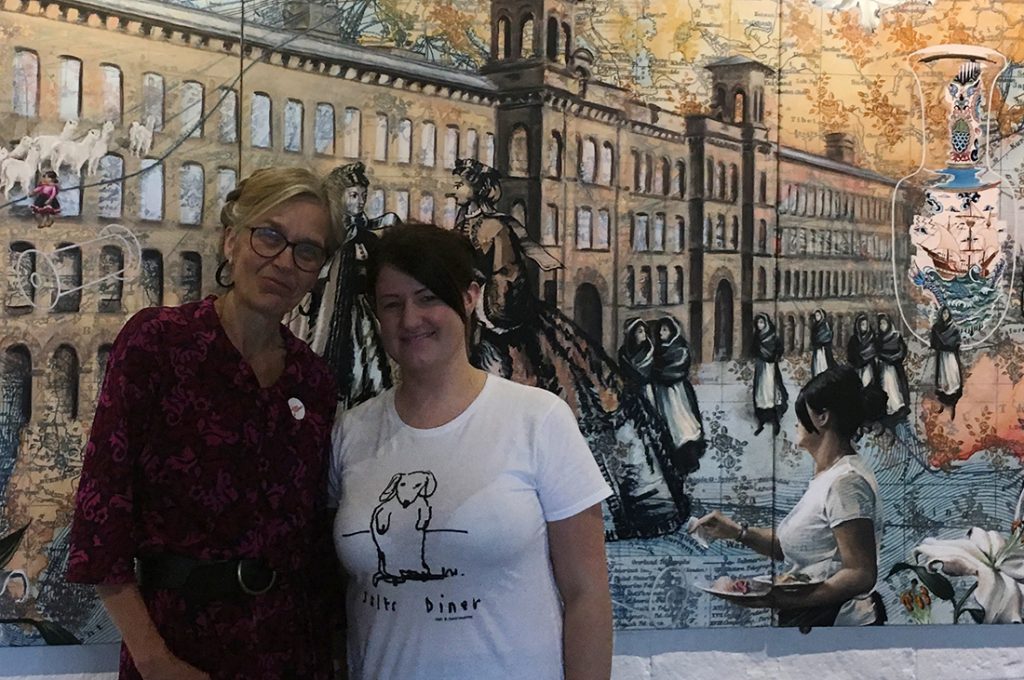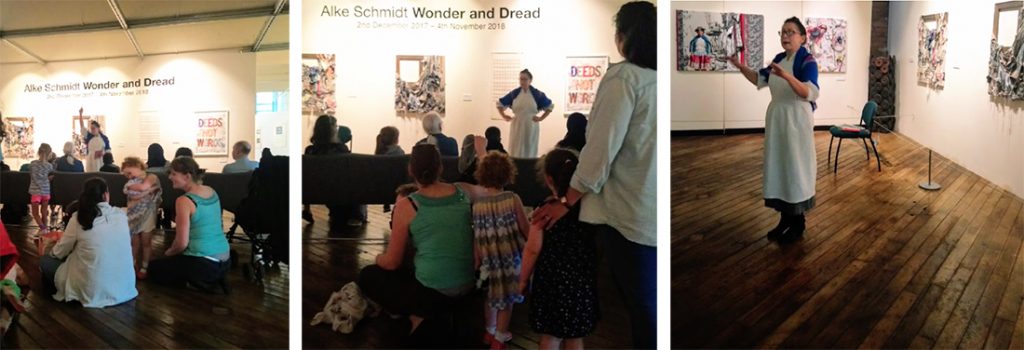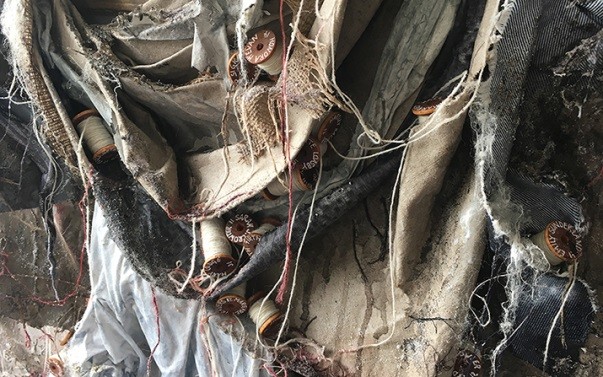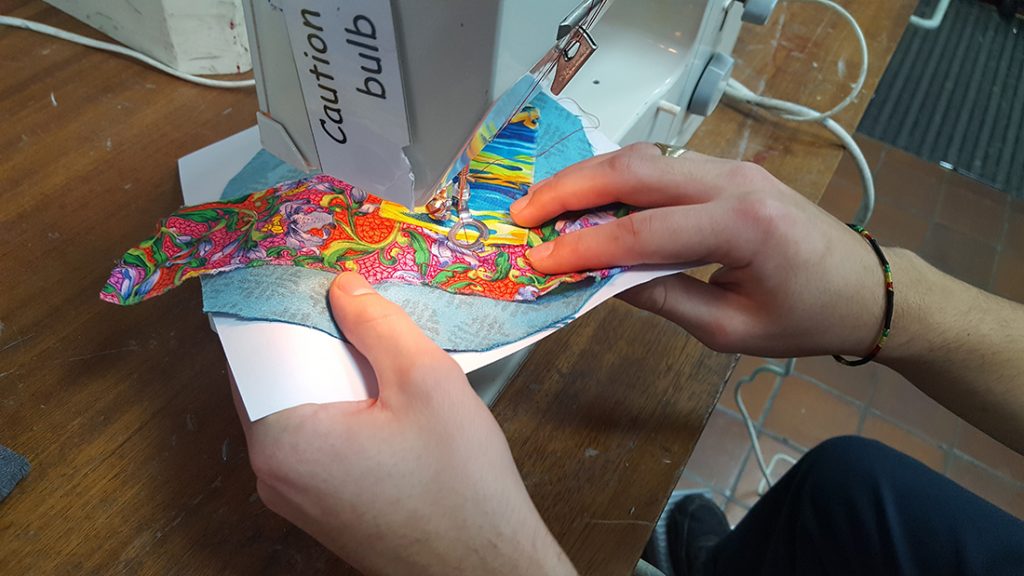A guest blog this time – Alke Schmidt was the artist behind the Wonder & Dread exhibition at Bradford Industrial Museum, and she kindly agreed to write a blog discussing the engagment programme linked that exhibition and her residency at Salts Mill, Saltaire.
It’s been such a wonderful and inspiring project, and seems strange that I don’t have more trips to Bradford lined up for now. During my research I really fell in love with the place and its people, and made many new friends. Also, because I see my work as a conversation with the viewer, I really enjoyed talking to visitors and hearing their stories when I came in to give guided tours. The panel discussion I organised at the Industrial Museum about (un)fair fashion was another highlight, bringing in a capacity audience to talk about the environmental and social problems associated with the clothes we wear today and what can be done to make global textile supply chains more sustainable. In fact, the one thing I regret about the project is not living closer to Bradford – a 6 hour round trip (if the trains are cooperating!) makes popping into the exhibition at short notice almost impossible.
Therefore I am really grateful for having had the chance to collaborate with two wonderful Bradford-based artists, who have delivered an extensive engagement programme for schools and families.
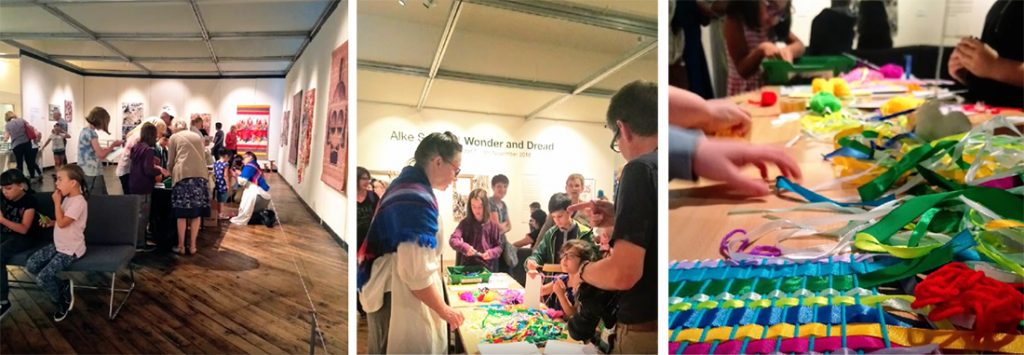
Irene Lofthouse – writer, actor, storyteller – held 6 popular family drop-in sessions in the exhibition, spread throughout the year. Taking the role of 45-year old Mary Ryan, one of the 54 mill workers who died in the 1882 Newlands Mill disaster, brought to life the stories of hard work, danger and exploitation that are explored in “A Terrible Calamity” and other works in my exhibition.
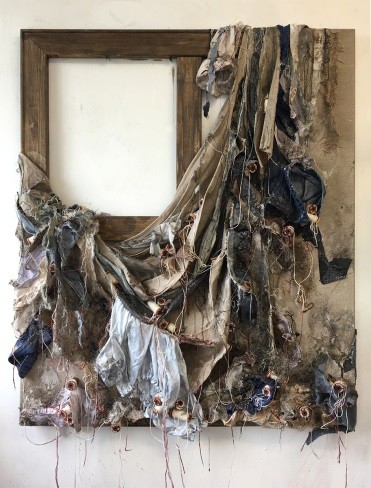
This was then followed by a hands-one weaving practice – with gorgeous and colourful results! Another reminder how the textile industry produces beautiful things but is labour-intensive (and all too often rife with exploitation). Irene was also a wonderful source of stories and tips about Bradford – I could have listened to her forever.
Naseem Darbey – multi-talented visual artist whose signature works are her textile-based “hollow drawings” – has been leading 5 one-day workshops with high school students and colleges.
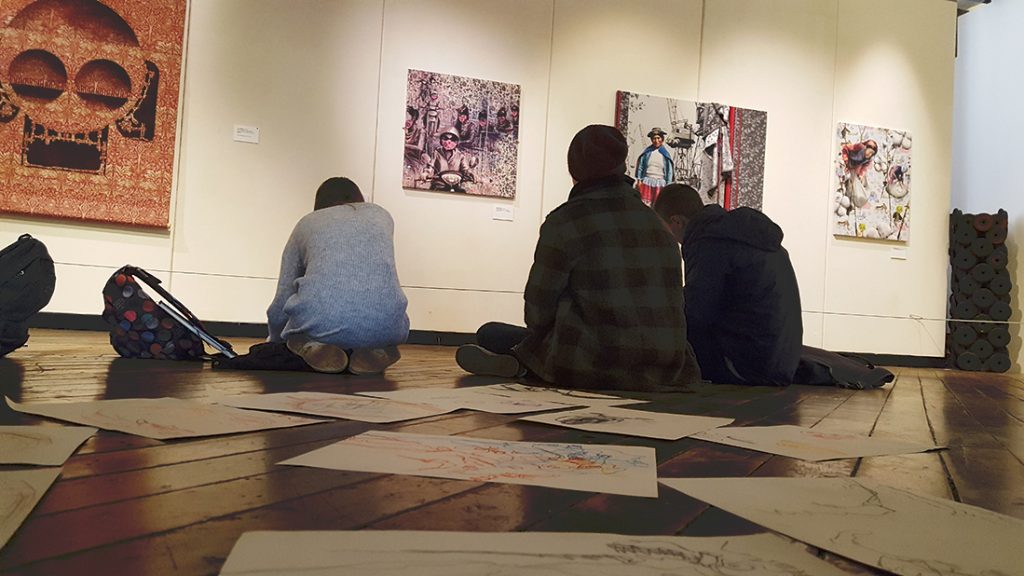
Each workshop involved students visiting the exhibition and talking about the work and the stories behind it, observational drawing and colour studies situ, as well as drawings from the machinery and architecture of the mill. Back at school students then worked with Naseem to turn their observations and impressions into their own artworks, creating canvasses that explored a range of techniques and processes including fabric manipulation, painting and collaged found objects. Students were invited to bring a piece of their own clothing to include in their work and to consider the themes raised in the exhibition. Many students started ambitious works during the workshop that they could then finish in their next regular art classes at school.
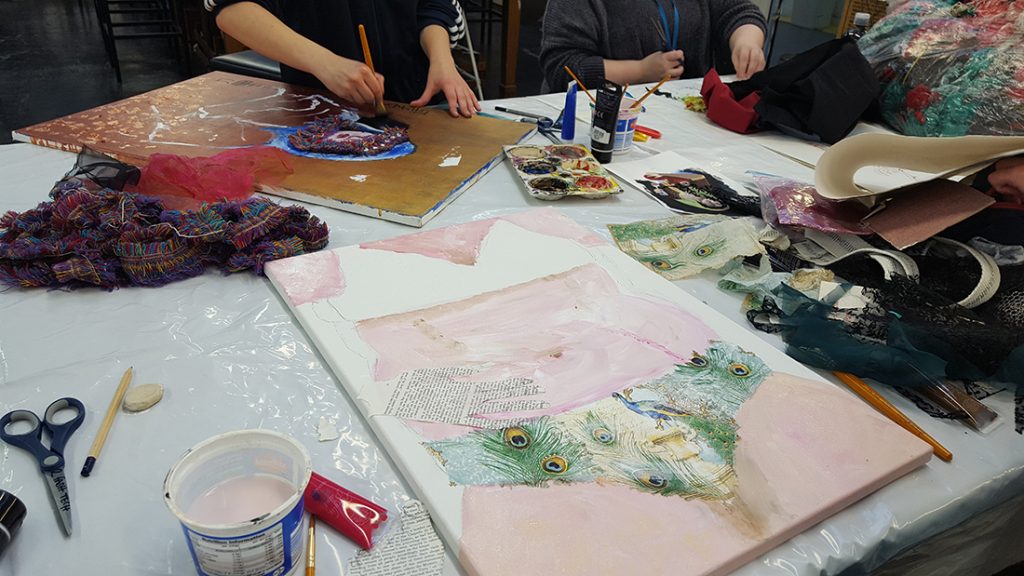
Another thing I’m really happy about is that my artistic presence in Bradford continues after the exhiition! You can still see “The Work of Salts”, my commission for Salts Mill, in the “People and Process” Gallery on the 3rd floor of Salts Mill.
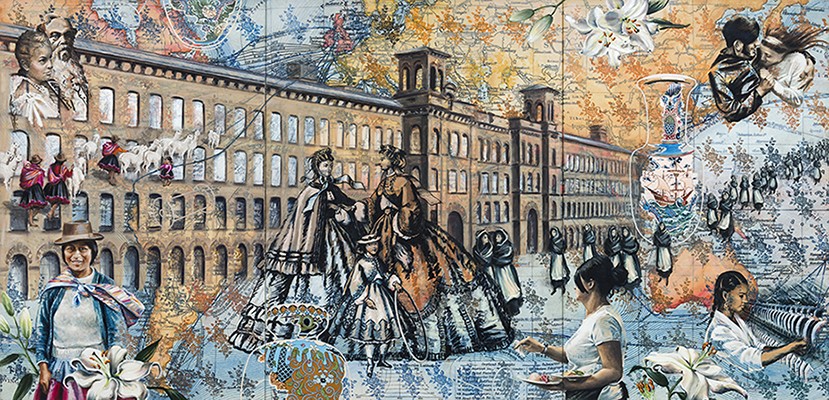
This work is inspired by the history of Salts Mill past and present. It’s my largest ever painting – it had to be because Salts Mill is so huge that anything that isn’t big would just disappear!
For the exhibition at Bradford Industrial Museum I had already made “The Secret of Titus’ Success”, a mixed media work inspired by the gorgeous Victorian alpaca/silk “lustre” dress fabrics that made Salts Mill famous – BIM holds a copy of the original 1853 sample book. The work for the Industrial Museum focused on the fact that Salts Mill used alpaca fibre imported from Peru for its fabrics and shines a spotlight on the indigenous Peruvian alpaca herders without whom Salts’ exquisite fabrics could not have been made.
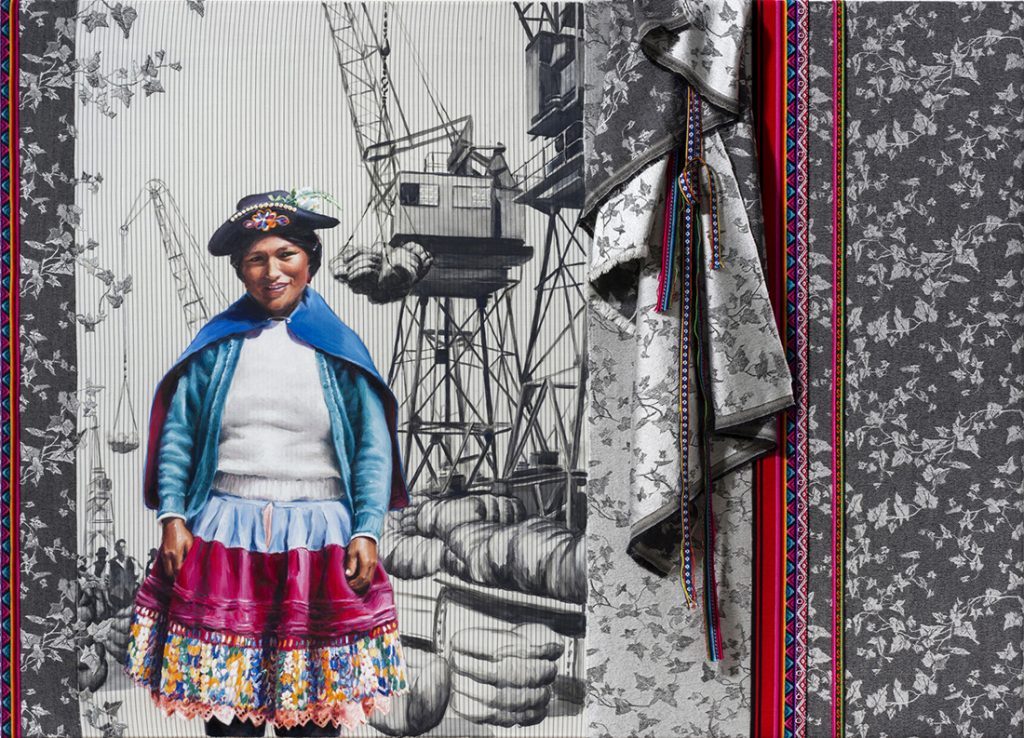
125 x 90 cm
For the Salts Mill installation, I wanted to make something different – something that took in different aspects of Salts Mill’s remarkable history through time, and captured the visual impact and wonderful spirit and energy that had attracted me to Salts Mill in the first place. I especially want to celebrate the work of all the people who worked hard to make Salts Mill a success then and now – founder Titus Salt, the Silver family who rescued the Mill from destruction in the 1980s, generations of mill workers from far and near, the Peruvian Alpaca farmers that supplied the Alpaca fibre for Salt’s famous lustre cloth, and the many people who work at Salts today.
It was a long process to make this multi-layered piece ). At the start of the process is a sketch (actually: many sketches!):
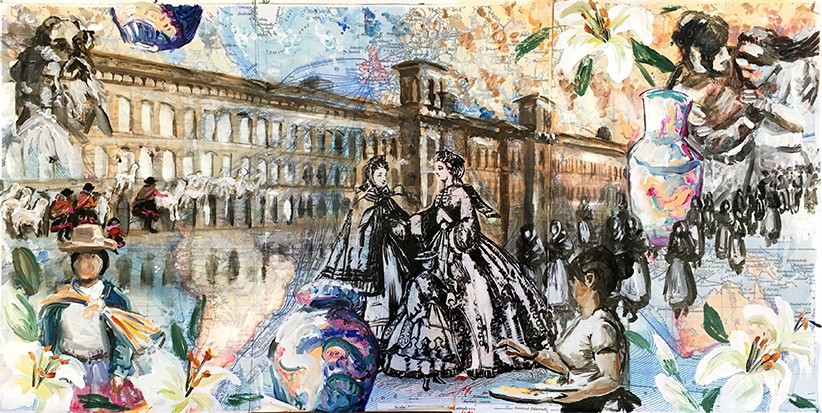
Moving on to the actual piece, I was stretching an image of a Victorian map of world trade routes onto 3 large stretchers, and then screenprinting a floral pattern from Salts’ 1853 sample book of alpaca/silk ‘ lustre’ fabrics on top.
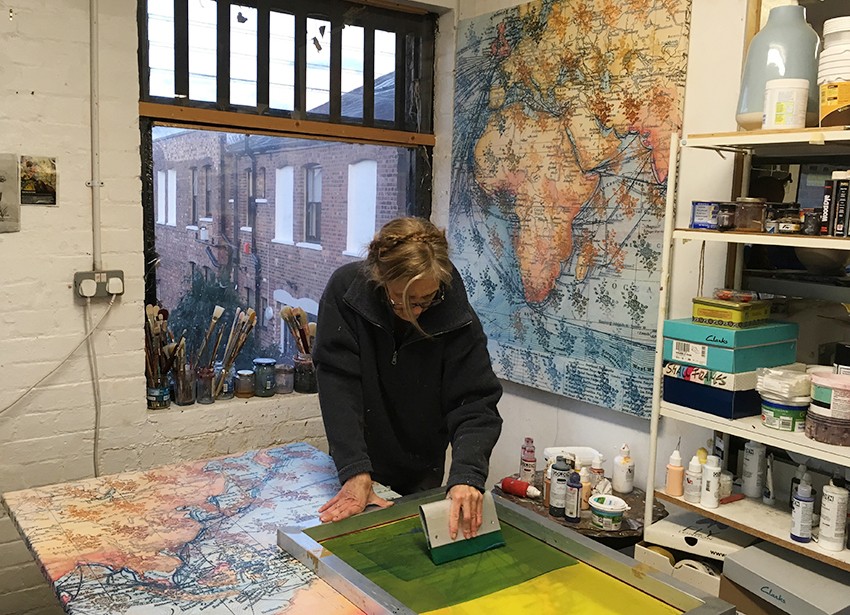
I had a lot of fun adding more and more layers – including, for a more surreal effect, some of the exuberant Burmantoft ceramic pots in Salts’ 1853 Gallery, and the lilies you can’t help noticing when you enter that Gallery.
You can find more detail about my research and the process of creating “The Work of Salts” on my website
I finished the work just in time for the 2018 Saltaire Arts Trail – so exciting to finally see the work in situ!
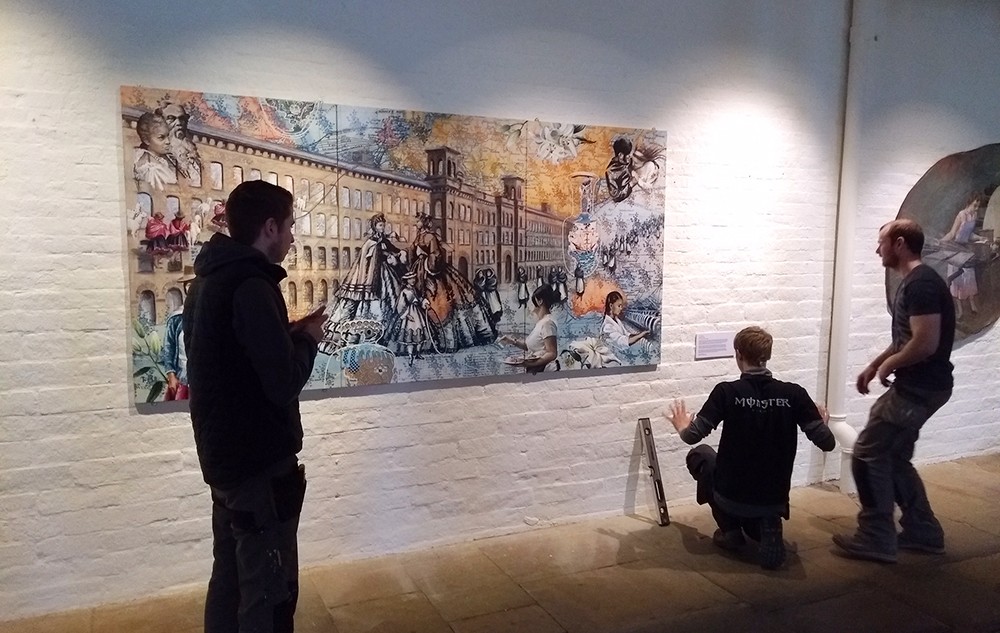
The painting includes a portrait of one of the lovely staff at Salts Diner, representing today’s workforce at Salts Mill. I was really worried that she might not like herself in the painting – but, as it turned out, she was pleased with the result – and so were her colleagues, who recognised her immediately in the picture. Phew!
